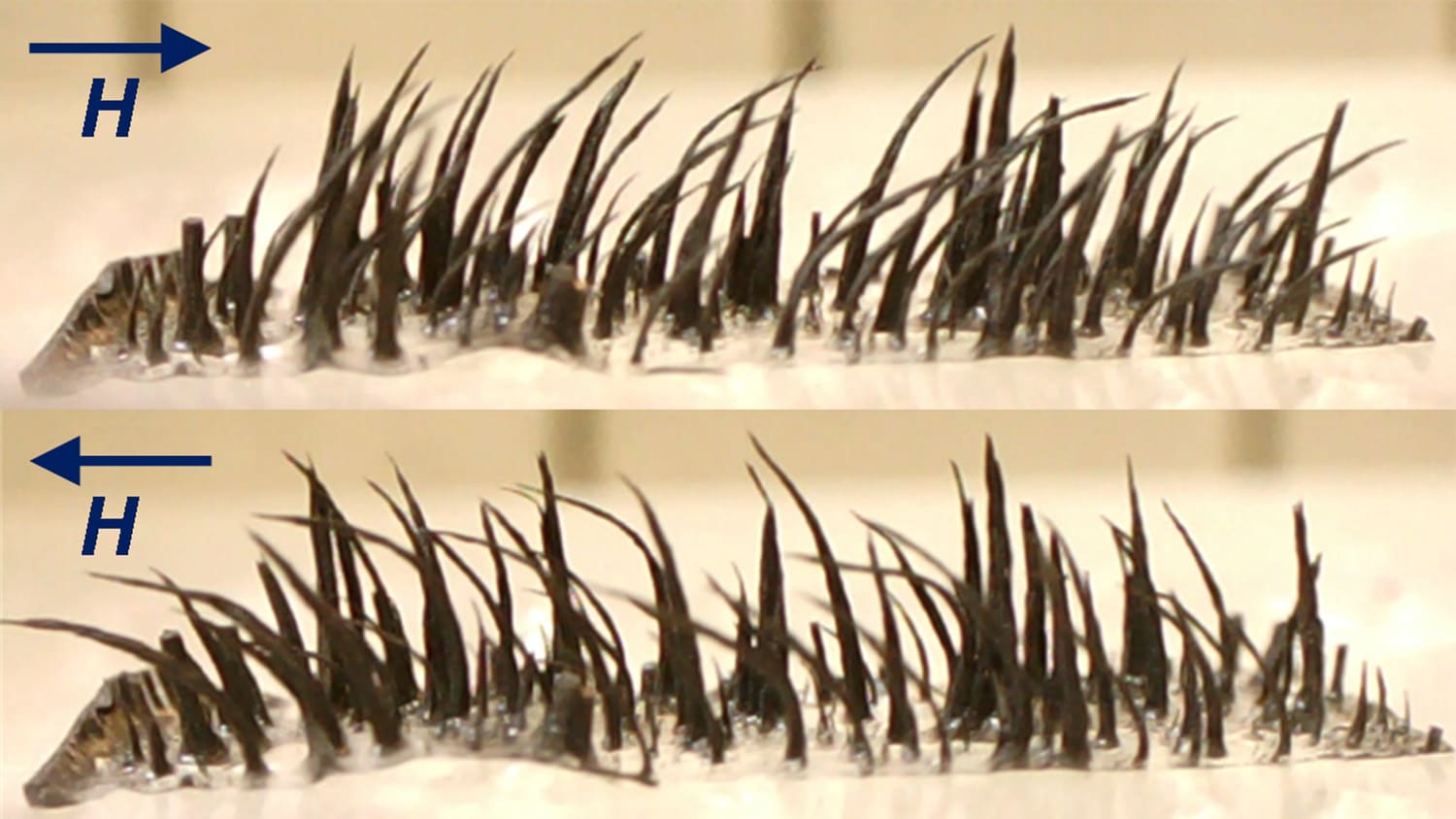Researchers Develop Novel Multiferroic Materials and Devices Integrated With Silicon Chips
For Immediate Release
A research team led by North Carolina State University has made two advances in multiferroic materials, including the ability to integrate them on a silicon chip, which will allow the development of new electronic memory devices. The researchers have already created prototypes of the devices and are in the process of testing them.
Multiferroic materials have both ferroelectric and ferromagnetic properties.
“These multiferroic materials offer the possibility of switching a material’s magnetism with an electric field, or switching its electric polarity with a magnetic field – making them very attractive for use in next-generation, low-power, nonvolatile memory storage devices,” says Dr. Jay Narayan, John C. Fan Distinguished Chair Professor of Materials Science and Engineering at NC State and senior author of two papers describing the work.
Researchers had previously known that you could create a multiferroic material by layering barium titanate (BTO), which is ferroelectric, and lanthanum strontium magnese oxide (LSMO), which is ferromagnetic. But these “bilayer” thin films weren’t feasible for large-scale use because they could not be integrated on a silicon chip – the constituent elements of the thin films would diffuse into the silicon.
But Narayan’s team has advanced the work in two ways. First, by developing a technique to give BTO ferromagnetic properties, making it multiferroic without the need for LSMO; second, by developing buffer layers that can be used to integrate either the multiferroic BTO or the multiferroic BTO/LSMO bilayer film onto a silicon chip.
To make BTO multiferroic, the researchers used a high-power nanosecond pulse laser to create oxygen vacancy-related defects into the material. These defects create ferromagnetic properties in the BTO.
The buffer layers are titanium nitride (TiN) and magnesium oxide (MgO). The TiN is grown as a single crystal on the silicon substrate. The MgO is then grown as a single crystal on the TiN. The BTO, or BTO/LSMO bilayer film, is then deposited on the MgO. The resulting buffer layers allow the multiferroic material to function efficiently without diffusing into the silicon and destroying silicon transistors.
“We’ve already fabricated prototype memory devices using these integrated, multiferroic materials, and are testing them now,” Narayan says. “Then we will begin looking for industry partners to make the transition to manufacturing.”
The work is described in two papers in the Journal of Applied Physics: “Magnetic properties of BaTiO3/La0.7Sr0.3MnO3 thin films integrated on Si(100),” which was published Dec. 10, 2014; and “Ferroelectric and ferromagnetic properties in BaTiO3 thin films on Si (100),” which was published September 4, 2014. Lead author on both papers was Dr. Srinivasa Singamaneni, a postdoctoral researcher at NC State. Both papers were co-authored by Dr. John Prater, of the U.S. Army Research Office (ARO) and NC State. The December paper was co-authored by Dr. Wu Fan, a former NC State Ph.D. student who is now a postdoctoral researcher at Princeton. The September paper was co-authored by Sandhyarani Punugupati, a Ph.D. student at NC State, and Dr. Frank Hunte, an assistant professor of materials science and engineering at NC State.
The research was supported by the ARO under grant number W911NF-04-D-0003.
-shipman-
Note to Editors: The study abstracts follow.
“Magnetic properties of BaTiO3/La0.7Sr0.3MnO3 thin films integrated on Si(100)”
Authors: Srinivasa Rao Singamaneni, J.T. Prater, North Carolina State University and Army Research Office; Wu Fan and J. Narayan, North Carolina State University
Published: Online Dec. 10, 2014, Journal of Applied Physics
DOI: 10.1063/1.4903322
Abstract: Two-phase multiferroic heterostructures composed of room-temperature ferroelectric BaTiO3 (BTO) and ferromagnetic La0.7Sr0.3MnO3 (LSMO) epitaxial thin films were grown on technologically important substrate Si (100). Bilayers of BTO/LSMO thin films display ferromagnetic Curie transition temperatures of -350 K, close to the bulk value, which are independent of BTO films thickness in the range of 25–100 nm. Discontinuous magnetization jumps associated with BTO structural transitions were suppressed in M(T) curves, probably due to substrate clamping effect. Interestingly, at cryogenic temperatures, the BTO/LSMO structure with BTO layer thickness of 100 nm shows almost 2-fold higher magnetic coercive field, 3-fold reduction in saturation magnetization, and improved squareness compared to the sample without BTO. We believe that the strong in-plane spin pinning of the ferromagnetic layer induced by BTO layer at BTO/LSMO interface could cause such changes in magnetic properties. This work forms a significant step forward in the integration of two-phase multiferroic heterostructures for CMOS applications.
“Ferroelectric and ferromagnetic properties in BaTiO3 thin films on Si (100)”
Authors: Srinivasa Rao Singamaneni, J.T. Prater, North Carolina State University and Army Research Office; Sandhyarani Punugupati, Frank Hunte, and Jagdish Narayan, North Carolina State University
Published: Online Sept. 4, 2014, Journal of Applied Physics
DOI: 10.1063/1.4894508
Abstract: In this paper, we report on the epitaxial integration of room temperature lead-free ferroelectric BaTiO3 thin (~1050 nm) films on Si (100) substrates by pulsed laser deposition technique through a domain matching epitaxy paradigm. We employed MgO and TiN as buffer layers to create BaTiO3/SrRuO3/MgO/TiN/Si (100) heterostructures. C-axis oriented and cube-on-cube epitaxial BaTiO3 is formed on Si (100) as evidenced by the in-plane and out-of-plane x-ray diffraction, and transmission electron microscopy. X-ray photoemission spectroscopic measurements show that Ti is in 4(+) state. Polarization hysteresis measurements together with Raman spectroscopy and temperature-dependent x-ray diffraction confirm the room temperature ferroelectric nature of BaTiO3. Furthermore, laser irradiation of BaTiO3 thin film is found to induce ferromagnetic-like behavior but affects adversely the ferroelectric characteristics. Laser irradiation induced ferromagnetic properties seem to originate from the creation of oxygen vacancies, whereas the pristine BaTiO3 shows diamagnetic behavior, as expected. This work has opened up the route for the integration of room temperature lead-free ferroelectric functional oxides on a silicon platform.
- Categories:


